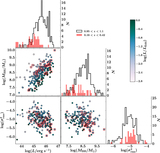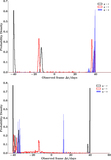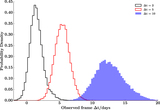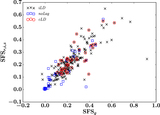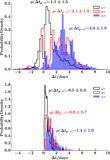Image Details
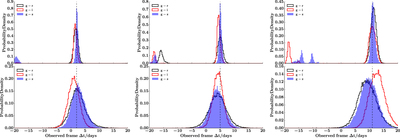
Caption: Figure 6.
Probability density distributions of lags in the observed frame between the mock g band light-curve and shifted and resampled mock r-, i-, and z-band light curves. The mock light curves are constructed based on a high-cadence damped random-walk light curve as described in Section 3.2. From left to right, they are cases when the mock r-, i-, and z-band light curves are shifted by 2, 5, and 11 days, respectively, as indicated by the vertical dashed lines. The bottom panels are for quasar J022020.02–034331.1 in MD01, while the top panels are for quasar J221917.01–000757.5 in MD09. The mean g-band magnitude uncertainties for J221917.01–000757.5 and J022020.02–034331.1 are 0.01 and 0.09 mag, respectively, which explains why the probability density distributions in the bottom panel are much broader than the distributions in the top panels.
Copyright and Terms & Conditions
© 2017. The American Astronomical Society. All rights reserved.



